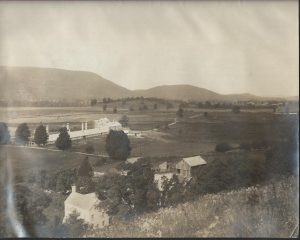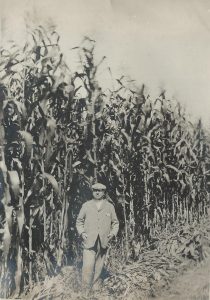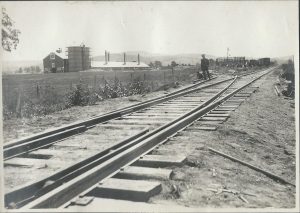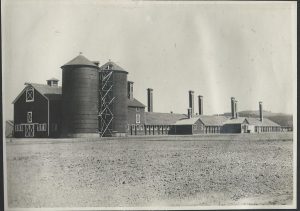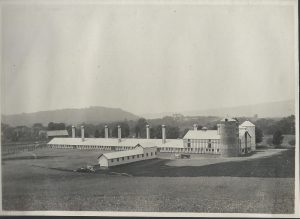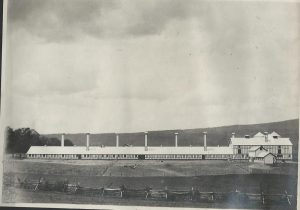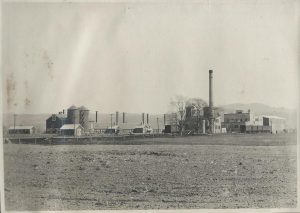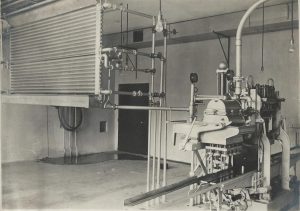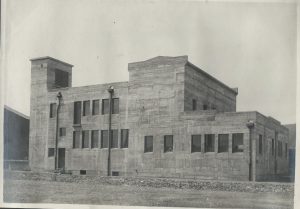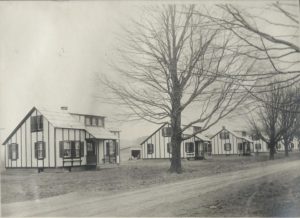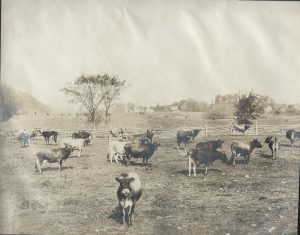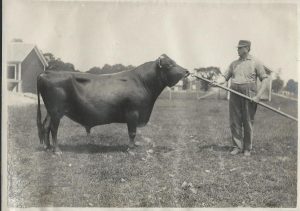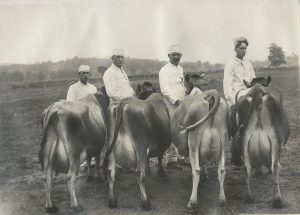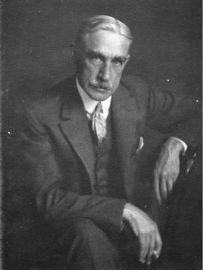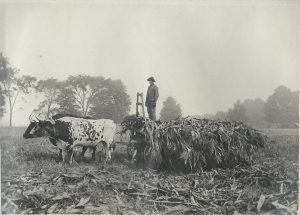Briarcliff Farms was first established in the village of Briarcliff Manor in Westchester County, New York in 1890 by Walter William Law (1837-1924). It was at one point one of the largest dairy operations in the Northeast, known as much for being modeled after a European country manor, with its tenant farming and Tudor-style buildings, as for its progressive farming practices.

Beginning in 1907, rising property values and the decline of agricultural development in Westchester County forced Mr. Law to move the entire production to rural Pine Plains in Dutchess County, New York. To accomplish this feat, he purchased 12 farms on both sides of the Pine Plains-Stanford Road (present-day State Highway 82) about two miles south of the hamlet of Pine Plains, totaling 3,249 acres. Other small farms were also later acquired.
These are the original farms that were purchased to create Briarcliff Farms:
Frank Eno 576 acres
Mrs. N.J. Bathrick 340 acres
Sheldon P. Strever 134 acres
Smith Sackett 260 acres
James Lewis 130 acres
Charles Thomas 140 acres
Edward Johnson 163 acres
Samuel Tanner 235 acres
Harry Husted 221 acres
Deuel farms 550 acres
Mulford Conklin 500 acres
By consolidating these family-owned, local farms that had dotted the landscape of southern Pine Plains for generations and replacing them with an industrial-sized operation complete with its own power station, Briarcliff Farms no doubt transformed the quaint, pastoral character of the region. Yet it also opened up new economic possibilities for the town, in the same way that the coming of the railroad had changed Pine Plains decades previously. In fact, one of the things that made relocating to Pine Plains so appealing, besides its rich farmland, was the proximity of the Central New England Railroad.
Briarcliff Farms in Pine Plains was comprised of three sites: Barns A, B, and C, each barn built at a cost of $20,000 and housing 200 registered and high-grade Jersey cows. Barn A, on the west side of the Pine Plains-Stanford Road (where Mashomack Fish and Game Preserve Club and the Josef Meiller Farm are today), was the main site. This is where the creamery (dairy), power station, ice house, water tower, manor house, and tenant farmer “cottages” were located, and where the milk, cheese, butter, and buttermilk were processed for shipment via rail to New York City.
Mr. Law wanted to produce milk that was pure enough for babies. Milkers came to work at 1:30 am; each milker had 16 cows to care for. Before milking, each cow would be curry-combed and brushed, and the udder and rear part of the cow washed and dried (each cow had its own cleaning tools). The milkers changed their uniforms prior to milking, which started at 3:00 am. A clean pail was used for each cow, and the milk was weighed and recorded. Twice each day the walls of the barn were washed down.
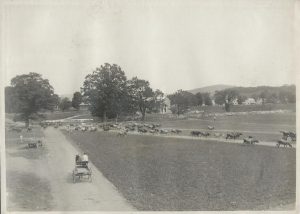
Briarcliff employed many dairymen from Holland because they were reputed to be the best milkers in the world. The Bethel Union Church in the hamlet of Bethel at Barn B, located on the east side of the road, became a social center for these workers, where night classes in English were provided, and in 1911, the first annual Thanksgiving dinner for Briarcliff employees was held at the church, with the singing of Dutch songs a special feature.
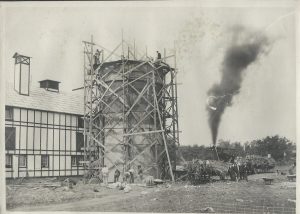
Barn C, the southern-most site, was located on the west side of the road on the Pine Plains-Stanford town line. The general manager of this entire operation was George W. Tuttle (see "People" page).
In 1918, Oakleigh Thorne (1866-1948) of Millbrook purchased the property and, keeping the Briarcliff Farms name, made it famous for the breeding of champion Aberdeen Angus beef cattle. At one point, Pine Plains supplied the stock for 95% of the Angus cattle in the United States.
According to an article in the Angus Angles Newsletter, “Briarcliff exhibited the International Grand Champion Female in 1927, International Grand Champion Bull in 1930 and the International Grand Champion Steers in 1931 and 1933 along with numerous other prominent individuals. Oakleigh Thorne was the director of the International Livestock Exposition and was inducted into the Saddle and Sirloin Portrait Gallery then later into the American Heritage Foundation in 1983.  Briarcliff had a tremendous impact on many herds throughout the North American continent, and the Briarcliff prefix can be found in many pedigrees today.”
Briarcliff had a tremendous impact on many herds throughout the North American continent, and the Briarcliff prefix can be found in many pedigrees today.”
The land acquired by Briarcliff Farms encompassed the most historic site in Pine Plains. Near Barn B had been located the first Christian congregation of Native Americans in North America, established in 1742 by Moravian missionaries at a Mahican village named Shekomeko. In 1859 a monument commemorating the mission had been erected by local historians, town fathers, and the Moravian Historical Society from Bethlehem, Pennsylvania, on what was then the Edward Huntting farm.
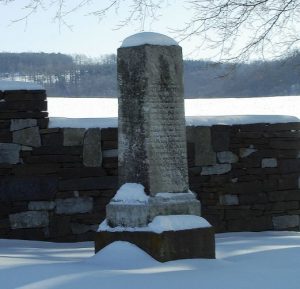
Here it had rested in a field for over sixty years, reputedly on the site of the grave of one of the missionaries. When Walter Law purchased this property as part of Briarcliff Farms in 1907, he made the decision to leave the monument undisturbed on the advice of local attorney Frank Eno. However, when Oakleigh Thorne took over ownership in 1918, he decided to try to get the monument moved to facilitate the cultivation of the field. After negotiations with the Moravian Historical Society, an agreement was reached, and the monument (not the grave) was moved approximately 400 yards northwest of its original site to the corner of Bethel Cross Road and what was then the Pine Plains-Stanford Road. Presumably, the argument that it would be more visible to passersby in the new location had some appeal for the historical society. Mr. Thorne agreed to convey by deed to the Moravian Historical Society title to the land on which the monument was to be re-erected.

In 1926 the monument was rededicated, and Mr. Thorne hosted an elegant lunch at his home in honor of this event, a repeat of a reception held at the same house in 1859 after the original dedication ceremony.
Shortly thereafter, the Pine Plains-Stanford Road was straightened, its new route bypassing the monument, and the portion of the old road where the monument was now located was renamed Strever Farm Road after the old Strever farm there. While still owned by the Moravian Historical Society, the monument is maintained by the Town of Pine Plains, and the adjacent land is now owned by Berkshire Stud Farm.
In 1935, the portion of Briarcliff Farms on the east side of the highway in Bethel (Barn B), a total of 2,000 acres, was sold off to Henry Jackson of Stormville and became Bethel Farms.
Dale Fletcher (1901-1978) from Iowa started out working for Briarcliff Farms and became the manager of Bethel Farms. The first Aberdeen Angus bull to be shipped to the Argentine came from the Bethel herd. Dale Fletcher was considered one of the best judges of Angus cattle on the continent. His wife Katherine was president of the Pine Plains Garden Club.
By the 1940s, Bethel Farms began subdividing its holdings. In 1952, Fletcher purchased Bethel Farms and a year later sold 102 head of the Bethel herd (averaging $1400 apiece) in order to start his own operation, Dal’Bairn, which he ran with his son William. Thereafter, Henry Jackson leased his land for grazing only.
What remained of Briarcliff Farms on the west side of the highway went through several different owners after Thorne’s death in 1948. In 1968 it was purchased by the Canal-Randolph Corporation for United Stock Yards, the largest owner-operator of stockyards in the country, and became a beef-feeding operation called Stockbrier, Inc. with Josef Meiller its manager.

In 1979, Mashomack Fish and Game Preserve Club relocated to Pine Plains from Shelter Island, New York and bought 2,300 acres of the Stockbrier property. They also acquired the site of the Moravian Mission on the east side of the highway. According to their website, “In 2008, the Club preserved and protected forever more than 1,650 acres by conservation easement to the Dutchess Land Conservancy. This was the largest and most substantial conservation easement ever given to the DLC, creating a contiguous protected area of more than 4300 acres, connecting land preserved by National Audubon, The Nature Conservancy, the State of New York and other land protected by the DLC.”
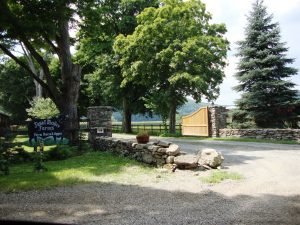
The historic photos of Briarcliff Farms were taken by Harry Jackson, a noted local photographer and businessman, and are from Walter W. Law’s personal album that was given to the Little Nine Partners Historical Society.
Sources:
Out of the Wilderness, a LNPHS publication
“New York – The Mother Church of Angus History”, by Tom Burke, written for the National Angus Tour in New York in 2013 and originally printed in the Trowbridge Family Angus Sale Book in 2013; New York Angus Angles Newsletter, August-September 2014
"Briarcliff Farms", from Wikipedia
"Oakleigh Thorne", from Wikipedia
Big Old Houses: "A Short History of Millbrook", by John Foreman, January 7, 2015
The Pine Plains Register, The Pine Plains Herald, and The Register-Herald

